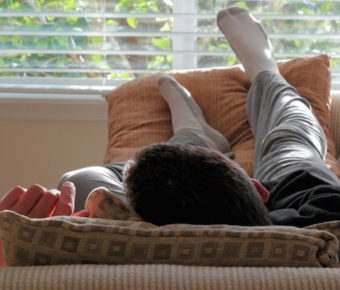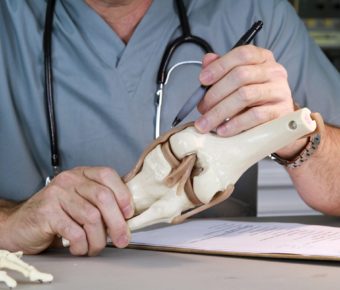
BG-12: I Don’t Like To Use Big Words part 2
Until last week, the word proprioception has been a term that many of you have never heard. As I said in last week’s post, the word describes the brain’s ability to sense where all of the body’s parts are in space, at any given time. In addition, because it “knows,” it has the ability to change from one position to a new position, ALMOST instantaneously. This allows us to do everything from simply turning our head to look in a new direction, to reaching for something that is sitting on the other end of the table and to move, react or reposition ourselves when we need to protect against injury.
But what are some of the ways that we can improve our proprioception?
In ONE OF MY PREVIOUS POSTS I talked about, well, I actually wrote a series about, how most people who walk into the gym should not be using the seated exercise machines. One of the benefits of doing exercises while standing is that the body’s smaller muscles have to work. These fine, smaller muscles typically creates the movement that allow small position changes to occur, that don’t require a lot of force.
Plyometric exercises are another good way to improve proprioception. An example of a good plyometric exercise is throwing a ball off of a mini-trampoline and catching it – the smaller the ball and the harder you throw it, the harder your brain has to work and the faster it has to respond to get you into the right position to make the catch. (FYI: Probably best to start out using something along the lines of a dodgeball ball, as opposed to a golf ball).
One of my favorites, that is so simple and can be done anywhere, at any time, is standing with your eyes closed. Closing your eyes shuts off the use of your vision to tell your brain where all of your body parts are in space, and not just in relation to the body itself, but also to its surroundings. You can feel your proprioceptors working harder the very minute you close your eyes and keep them closed for any time longer than a simple blink. You can also feel them working and get a similar affect by simply standing in a dark room.
One amazing thing about the proprioceptors and the body’s neurological receptors and sesnory organs is that there is no limitation to what it can handle. The brain is aware of where each arm is and where each leg is, but also where each finger and each toe is. It knows whether a hip is flexed or extended, a knee is bent or straight and whether one arm is above your head while the other is scratching your back, and at a moments notice is able to move each limb into its exact opposite position, immediately and simultaneously or in an exact sequence that you want it to move in – think about a dancer, a gymnast or a football player. All of them, on a regular basis, train so that everything is in sync and move how they want it to move, in less than a moments notice.
Improving proprioception improves the body’s awareness and its ability to protect itself, at any given time.
Read more of my blogs by CLICKING HERE, or learn more about me and what I do by CLICKING HERE. Have questions or need help? CLICK HERE to contact me.




